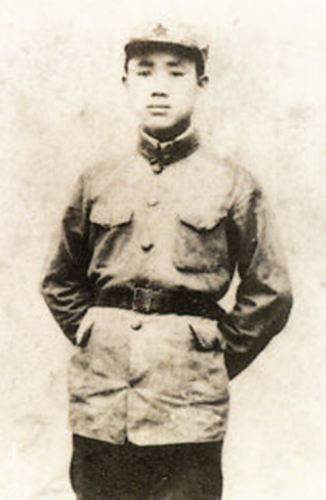
A Red Army soldier's photo underwent twists and turns for more than half a century before it was sent back to its owner's home, Liberation Army Daily reported.
In 1936, the Communist International published an article titled The Long March of the Twenty-fifth Army of China's Red Army. It carried this paragraph:
"In the desolate mountains at the borders of Central China's Hubei province, Henan province and East China's Anhui province, children, as young as 12, started on a journey of looking for their fathers. They saw all the miseries imposed by reactionary ruler and knew all political common sense in their childhood. This is how the Twenty-fifth Army of China's Red Army, also known as Children Army, was born. The age of most soldiers is between 13 and 18..."
The man in the photo was one of the children depicted in the article. His name was Wu Wei, or Wu Jianjun in the Red Army period. In 1931, the 13-year-old joined the Red Army to search for his father, Wu Sizhen, who was then a leader of a guerrilla force led by Chinese Soviet in western Anhui.
Having three years of schooling, Wu was appointed as a publicity agent and later the secretary of Army leader Xu Haidong, before becoming the publicity director at the Political Department of the Twenty-fifth Army.
He with the Army took part in the Long March on Nov 16, 1934, and trudged thousands of kilometers to reach Northern Shaanxi province 10 months later. After Twenty-fifth Army merged into the Fifteenth Army Group of China's Red Army in Sept 1935, the 17-year-old Wu Wei acted as the political commissar at the Office Agents Battalion of the fifteenth Army Group.
This photo of Wu Wei was taken by American Journalist Edgar Snow in 1936 when he went to northern Shanxi province for interview. Snow visited Xu Haidong, the then commander of the Fifteenth Army Group, and took a photo of Xu Wei as Xu was just around. But Xu Wei did not get the photo until 1950 when a comrade-in-arms give it to him.
The historical materials show that most figures in Snow's lens are Red Army's leaders or senior army generals. So it is unusual and precious to have a photo of a grass-roots Army cadre and has been kept to today.
In 1951, Wu Wei was going to study at Nanjing PLA Military Academy while his comrade-in-arms Li Jing was to join the War to Resist US Aggression and Aid Korea. At the departing time, Wu gave Li the precious photo as a gift for commemoration. Wu Wei never saw this photo again until he died of an illness in 1974.
In 2003, Li JIng's wife returned the photo to Wu Hongying, the daughter of Wu Wei. The photo finally came back to its owner's home after drifting for more than half a century.


















































